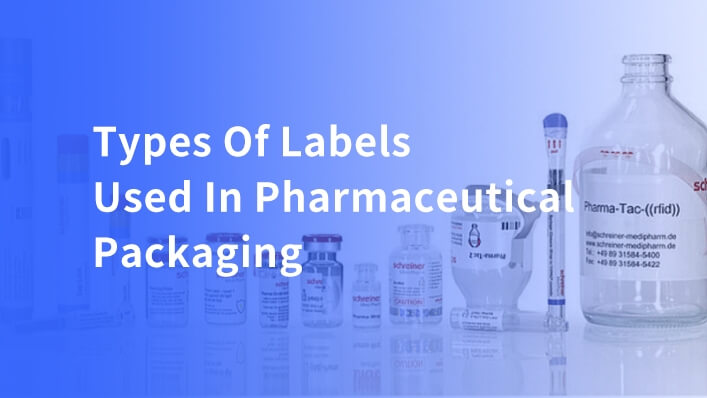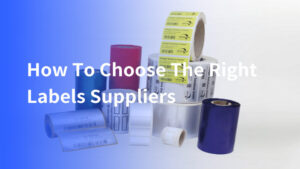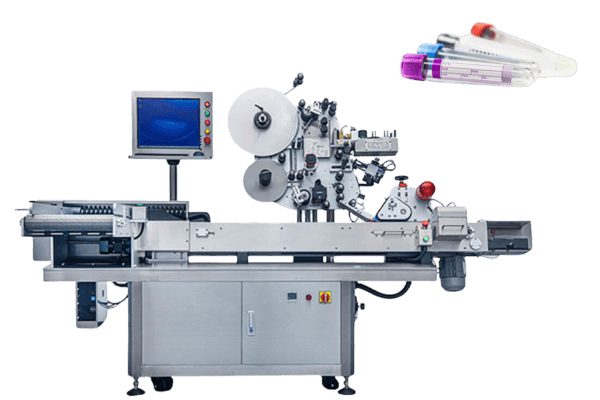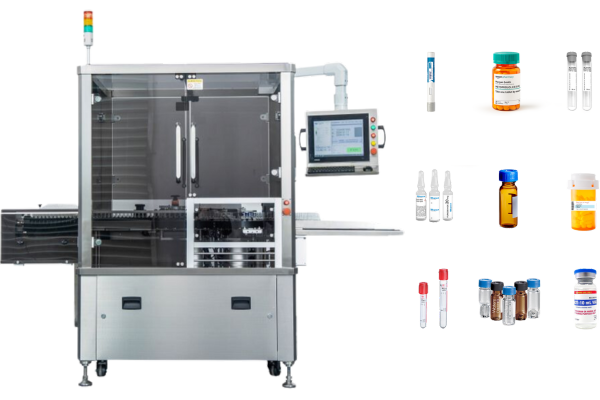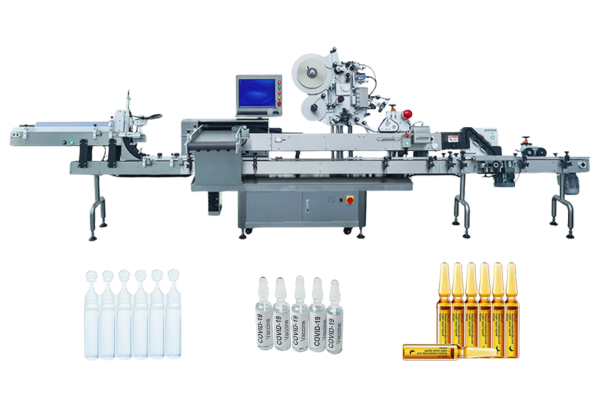Educating yourself about the types of labels used in pharmaceutical packaging is important. They tell the right medicine to the right person. Labels are vital to the process because they beautify the product and educate its consumers. They identify a particular medicine, its usage, and physical warnings if there are any.
Labels must be presented on every preparation, including tablets, syrups, and creams. Each has a different intention. Some labels tell you the dose of medicines you have to take. Others will warn about the side effects or possible allergies. Thus, the right label ensures that medicines are safely used.
Furthermore, the labels on medicine packages play a big role in keeping patients healthy. The label shows what the medicine is for and why you should use it. Clear and accurate labels help prevent misuse, ensure proper dosage, and guide safe handling. Additionally, they adhere to strict regulatory standards, ensuring compliance with authorities like the FDA while supporting healthcare professionals in delivering effective patient care.
This blog will help you recognize the exclusive types of labels within the pharmaceutical industry and their uses.
Key elements of pharmaceutical labeling
Labels will tell you the drug’s name, the amount, and how to take it. They will warn you about allergic reactions if the drug causes them. The label may have side effects under which you shouldn’t take the medicine. It also tells you when the drug goes bad and how to preserve it.
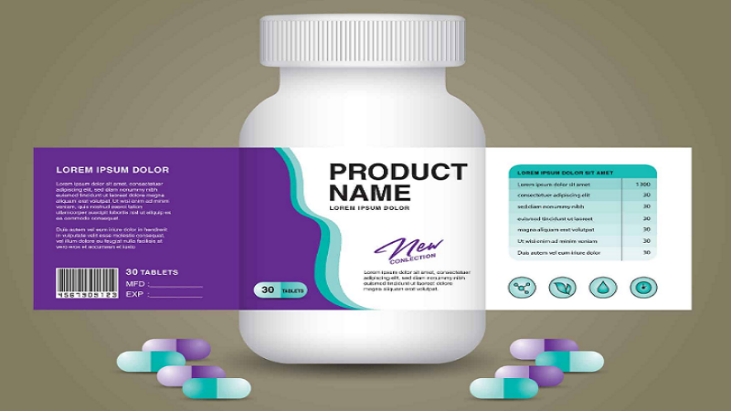
Types of labels used in pharmaceutical packaging
You can attach pharmaceutical labels to packages of medicine carrying important information. It also keeps protection against errors. Manufacturers use different pharmaceutical labeling systems. They ensure the medicine is safe and effective in action.
Pressure-sensitive (PS) labels
They have adhesive properties such that they do not need any glue or attaching to vessels. You press them on, and they stay in place. You can use PS labels on many products, such as bottles, tubes, and ampoules.
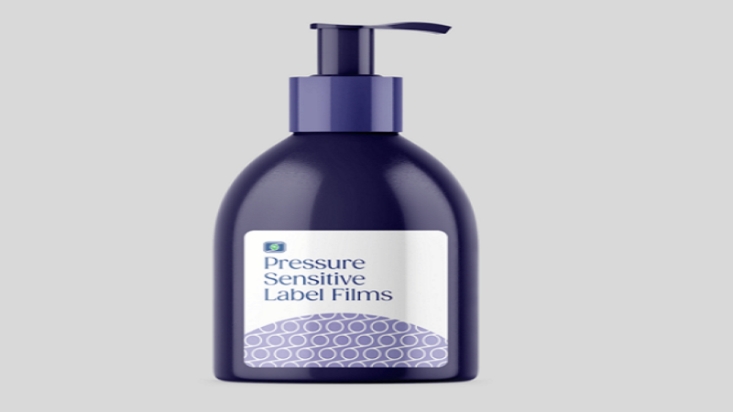
Pressure-sensitive labeling is one of the popular labels in packaging. Such pharma labels provide an excellent seal to medicines and ease their identification. These label materials are easily applied and very simple to use.
Common uses
- You can use them on bottles, tubes, and ampoules in the pharmaceutical packaging.
- Found on medicine boxes, vials, and packaging for liquid or solid drugs.
- You can use them to package over-the-counter and prescribed medicines.
Benefits
- It is very easy to apply on containers with a little pressure.
- Cost-effective; they do not need any tools or heating.
- Moisture resistance means you can use them in natural wet or humid conditions.
Challenges
- They may lose their stickiness if exposed to dirt and dust.
- If they do not adhere, they may peel off.
- It is not always appropriate for every surface or container.
Shrink sleeve labels
Shrink-sleeve labels are special kinds of labels made of plastic. They fit in shape with the container by applying heat to them. These labels are perfect for products that need full coverage and a tight fit.
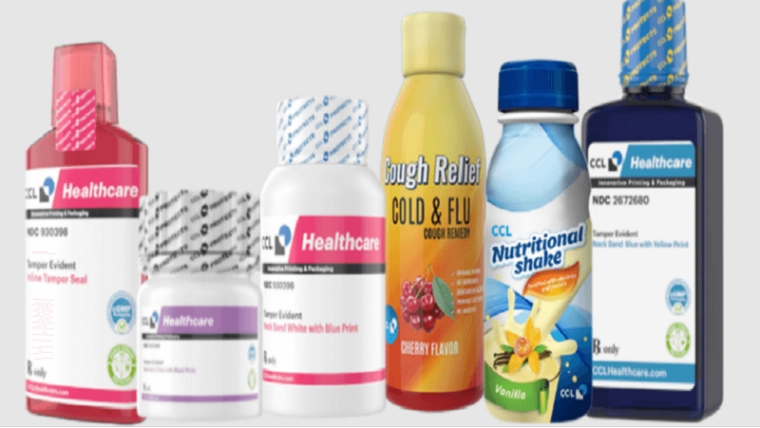
This is especially true when the container has an unusual or complex shape. You use pharma labels because they offer the best protection. Also, they help to make the information clearer. If we apply heat, the label shrinks around the container, giving it a neat and professional look.
Use in pharmaceutical packaging
- Shrink-sleeve labeling is beneficial in pharmaceutical packaging as it covers items completely.
- You can apply them in bottles, jars, or any object with a unique shape. They guarantee the safety of the product, preventing it from contamination.
- Ideal for any-shaped containers, beverages, or cosmetics
Benefits
- They cover completely around the container. So, they offer more areas to provide branding and instructions.
- You can use the extra area for logos, images, or special messages.
- These labels protect products from moisture and keep freshness intact.
In-mold labels
You can fuse in-mold labels into the container during production. It forms an integral part of the container. They make it durable and long-lasting. These are perfect for pharmaceutical boxes that need to be strong and tamper-resistant. They are generally used in plastic bottles, tubs, and containers.
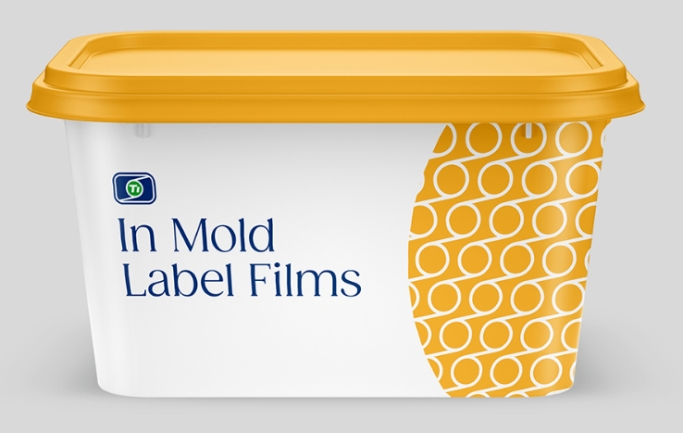
This is because the label does not peel off or get damaged. Since the label is a part of the molding process, it has a good look and is functional and appealing. Types of labels used in pharmaceutical packaging with examples, include medicine bottles. They need labels to stay intact and maintain the product’s safety.
Applications
- In-mold labels form part of pharmaceutical packaging for bottles and other containers.
- They are useful for containers that need a tough, durable label that will not peel off.
- They offer excellent protection from tampering.
- Being molded into the container, they are robust and very long-lasting.
- They resist wear and tear to keep looking good after long use.
Pros
- In-mould labels are very durable, tamper-proof, and precisely safe.
- It gives a high-quality finish that looks professional.
Cons
- Very often, it is costly to produce, so you prefer it for large amounts of products only.
Direct thermal labels
The hot thermal labels are special heat-sensitive labels. They do not need ink, toner, or ribbons to print information. These labels turn dark when you pass them under a heated printhead. This makes them super easy and cost-effective to use.
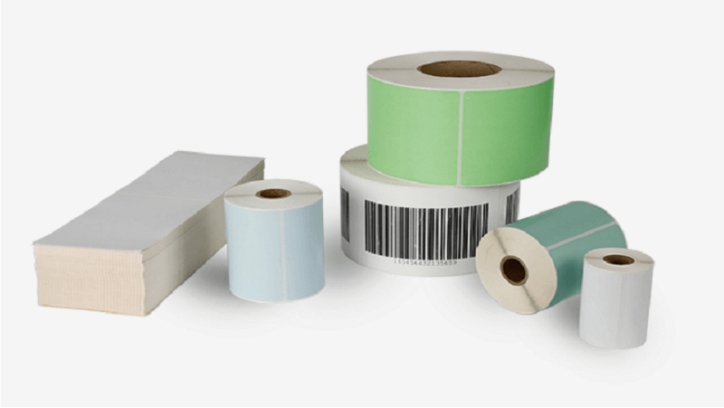
Pharma labels using direct thermal printing are often used for short-term needs. For example, you can use them on temporary pharmaceutical packaging or shipping labels. Since they do not need ink, they are cheaper to produce.
These labels do not last long and are good for receipts and labels. Use them where they would not be exposed to much heat or sunlight, as that will cause the labels to fade.
Common uses
- Short-term usage such as shipping, receipts, or temporary pharmaceutical labels.
- Most often used within warehouses, retail, and also labeling of products during transit.
Disadvantages
- Direct thermal labels are heat and sunlight-sensitive. Exposure can lead to fading of prints.
- These labels might not last long and thus are not advisable for items that need labeling for a long period.
Thermal transfer labels
These labels function as a ribbon that transfers ink onto the label surface. The heated printhead melts the ink on the ribbon and applies it to the label. Thus, it creates a high-quality, durable print.
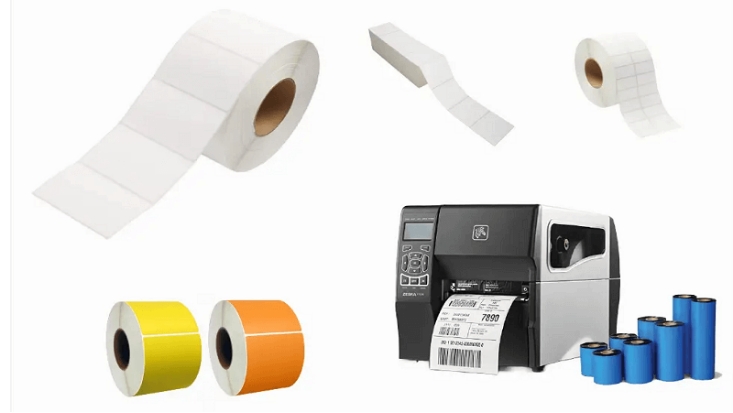
These labels don’t fade because they use pigment to make the print. These labels are often used when you need clear and long-lasting labeling. They are a good choice for labels that need to withstand rough conditions, like heat or moisture.
Uses in pharmaceutical packaging
- They are long-lasting and high-quality labels.
- The kind of packaging would resist moisture or sunlight.
Advantages and disadvantages
- Print lasts longer and is less susceptible to fading than direct thermal labels.
- They are more expensive than direct thermal labels. They need a ribbon and more printing equipment.
Label Materials in Pharmaceutical Packaging
In the field of pharmaceutical packaging, labeling material is an important aspect as it affects the integrity, legibility, and regulations of the product/brand. If the materials are of good quality, the labels remain and are readable during varying conditions and protect important information. The most frequently used materials are:
- Polypropylene (PP): A robust and resistant plastic that is suitable for drug manufacturing areas.
- Polyethylene (PE): An adaptable and tough material that is excellent for curved surfaces such as bottles.
- Paper Labels: Typically laminated for moisture protection, they are a cost-effective solution for some applications.
- Foil Labels: Provide improved protection against tampering and other environmental factors.
Opting for the right material for the labels helps them stay clear to the eye, adhere strongly to the containers, and conform to the regulations for safety and functionality.
Common pharmaceutical labeling errors and how to avoid them
Sometimes, errors occur in the medicine’s labels. Such mistakes could cause confusion or even sickness. Hence, avoiding such mistakes is essential for the well-being of all. Here are some common errors and solutions to them.
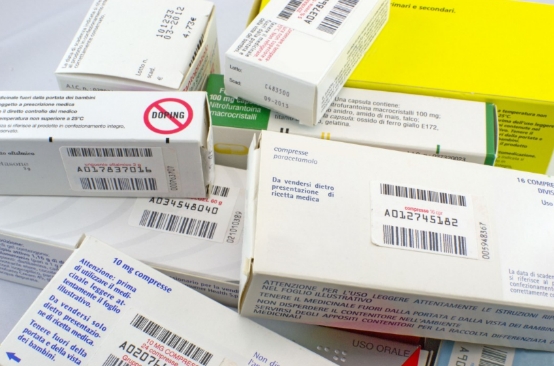
- Wrong Medicine Name: Always check the name of the medicine before printing the label.
- Incorrect dosage information: Make sure the dose and instructions are correct.
- Missing warnings: Never forget to add major warnings concerning side effects.
- Hard-to-read labels: Use large, clear letters that humans can read.
- Language problems: In case of another language, make sure the label is in that language too.
- Special needs: Some people may need bigger text or extra help reading the label. Make sure the design works for everyone.
Advancements in pharmaceutical labels
The medical and pharmaceutical sectors employ different types of packaging and labeling forms which include shrink sleeves, foil seals, blister pack labels, and box labels to help enhance the protection and safety of patients.
One of the many utilities of these packaging and labeling is to ensure protection and safety to the patients as well as compliance with regulations. The foil seals and shrink sleeves are strong, and cannot be removed easily, which helps in preventing misuse. On the other hand, QR codes and innovative features, which allow instant access to drug information, have emerged. These systems aim to improve patient safety, ensure environmental protection, and meet future demands.
Conclusion
Proper effective labeling is essential in pharmaceutical packaging. It makes medicines free from risk and ensures that they work as expected. Labelling tells us what medicines are, how we should be using them, and warnings, if any. Without a proper label, one can misinterpret the drug, leading to danger.
If you want to improve your labeling process, visit Viallabeller. We offer labeling machines that can help your business label. Our swift machines can label vials, ampoules, bottles, tubes, syringes, cartons, and boxes efficiently.
FAQs
Which are the 4 different types of labels?
The 4 types of labels include brand, informative, descriptive, and, grade labels. Brand labels help show the name and image of a brand. Informative labels give important details like how to use the product. Descriptive labels explain what the product does and its features. Grade labels show the quality or rating of the product.
What are the different types of pharmaceutical labels?
Medicines possess various pharma labels. These may be found in white or transparent polypropylene/polyethylene. The types of labels in pharmaceutical packaging with examples include bottle, tube, and ampoule labels. Each kind of label delivers perfect information and ensures the safety of medicines.
What are the labels on pharmaceutical product packaging?
These labels are stickers or tags that are attached to a pharma product. The labels have essential details such as ingredients and directions on use. Warnings and safety information are also part of these labels. Sometimes, brand information and price are also indicated. These labels for pharma are very significant in the proper usage of medicines.
What is the main label in pharmacy?
The main pharmacy label offers essential info, including the drug name, its strength, the prescribing doctor’s name, side effects, dosage conditions, regulations, and management guidelines.
What are the FDA labeling requirements for pharmaceuticals?
The FDA states clear pharmaceutical labels must be highlighted on all pharma products. The labels must describe the
- Product name
- Active ingredients
- Directions for use.
The label must also contain personal warnings, possible side effects, and storage instructions. These requirements help ensure the safety and proper use of the medicine.
What are the labels on product packaging?
Packaging labels are stickers or tags on a product’s box or container. They show important information like:
- What the product is
- Details about the product
- Contact information for the company
- Health and safety warnings
- Instructions on how to use it
- Marketing and pricing information
What are the 7 parts of a drug label?
The 7 key parts of a drug label include:
- Indications and Usage
- Dosage Forms and Strengths
- Dosage and Administration
- Warnings and Precautions
- Contraindications
- Drug Interactions
- Adverse Reactions
